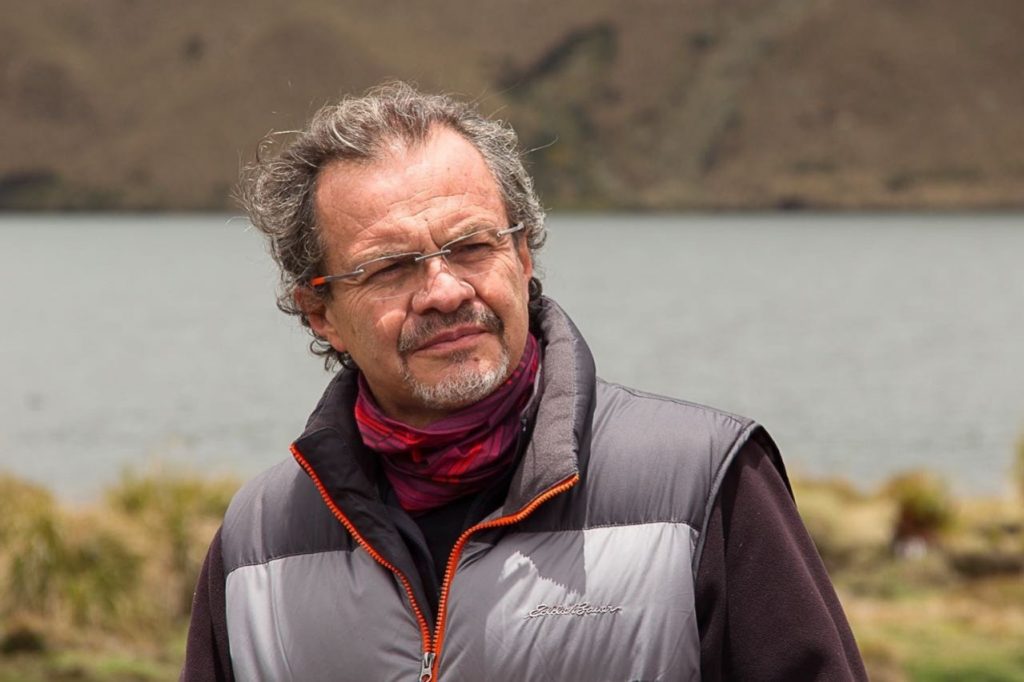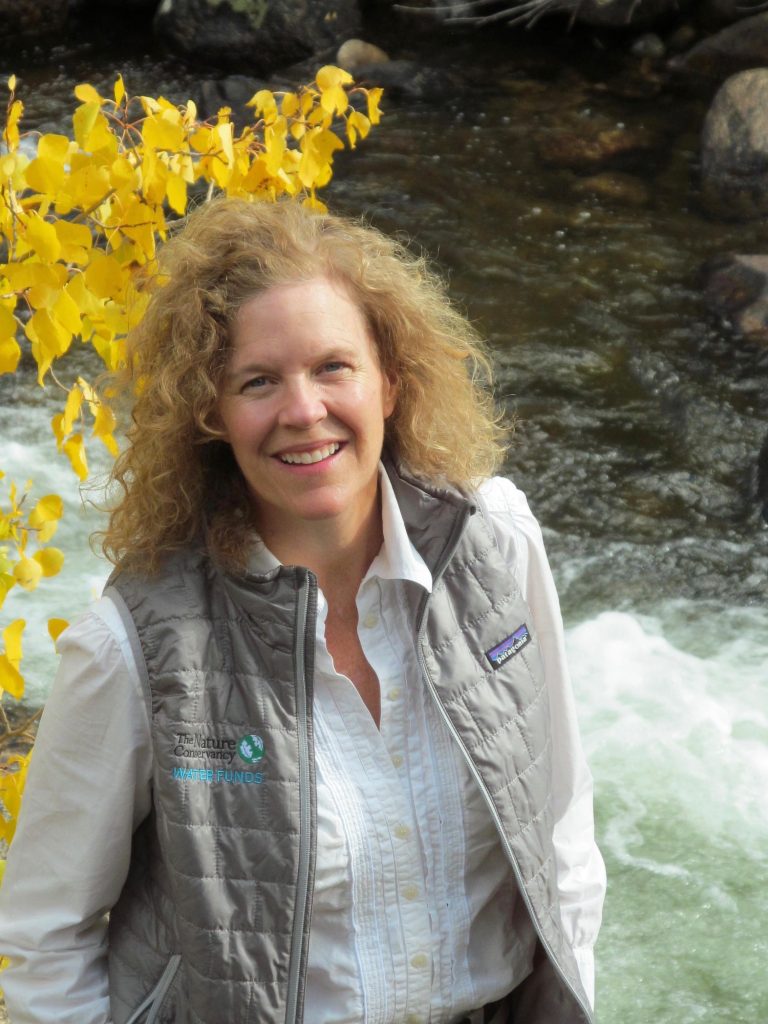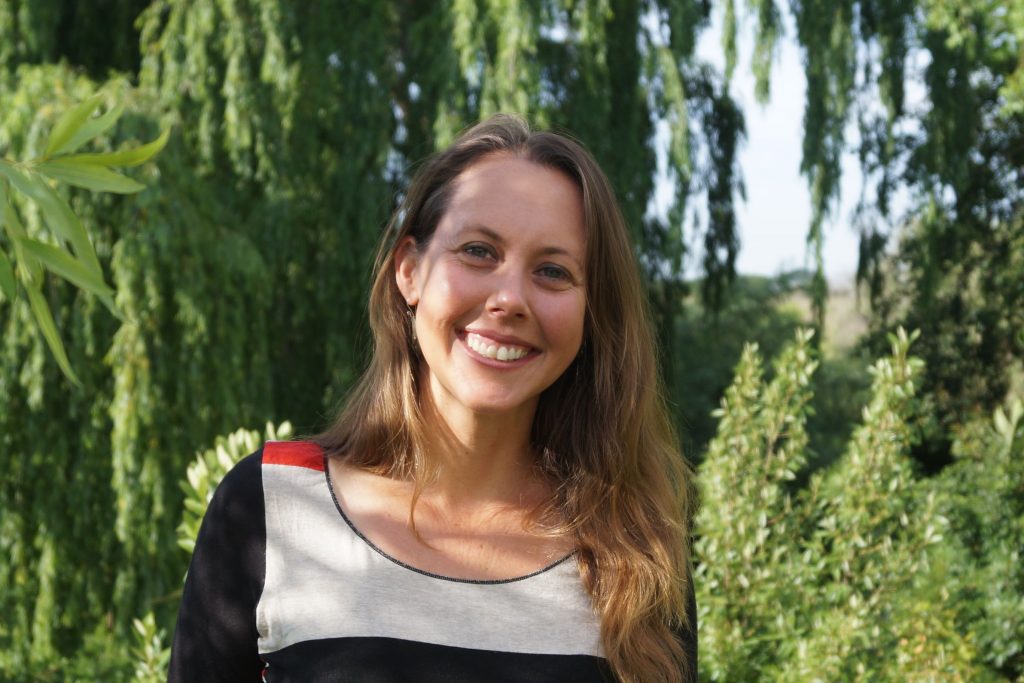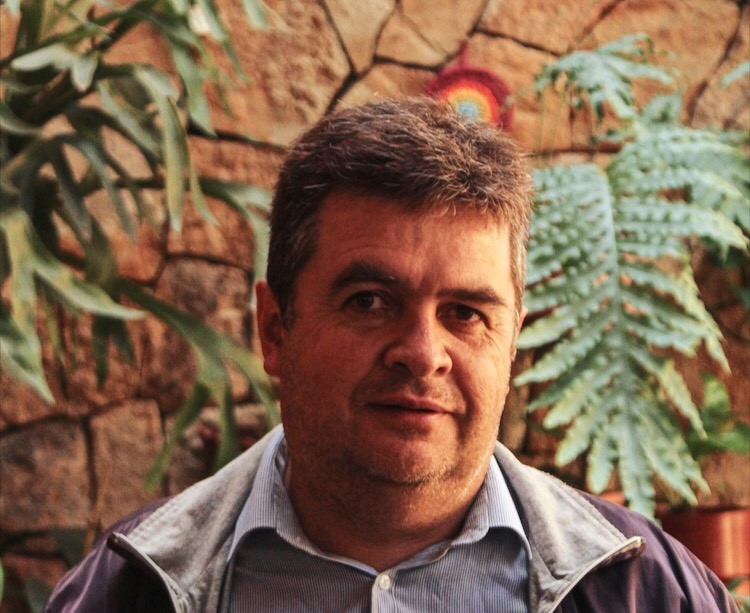What advice would you give professionals seeking to link urban water security to upstream basin health? By Nick Michell
 Maria Teresa Vargas, Executive Director, Fundación Natura Bolivia
Maria Teresa Vargas, Executive Director, Fundación Natura Bolivia
“Despite academic interest in payments for watershed services, many people react negatively to the idea that upstream landowners should be paid to provide a service. Watershared agreements were developed in the early 2000s as a way of side stepping such problems. The model was pioneered in the Bolivian village of Los Negros, when six downstream irrigators negotiated a groundbreaking deal with their upstream counterparts. By 2017, the initial six Bolivian farmers protecting 465 hectares had mushroomed to more than 6,000 families conserving 300,000 hectares across the Andes.
The underlying philosophy of Watershared is the same everywhere– people who produce water, share it; people who use water, share the benefits. However, Watershared does not rely on hydrological and economic studies to define the correct payment levels. Nor do the agreements focus on the opportunity cost of conservation. Rather, Watershared builds on one of the key findings of behavioural economics, that money is the most expensive way to motivate people. Social norms are not only cheaper, but often more effective as well. Watershared thus strengthens pro-conservation social norms by publically recognising individuals who contribute to the common good by conserving their ‘water factories’.”
 Pablo Lloret, Environmental Manager, Metropolitan Drinking Water and Sanitation Company of Quito, Ecuador
Pablo Lloret, Environmental Manager, Metropolitan Drinking Water and Sanitation Company of Quito, Ecuador
“Starting from the fact that the water crisis is mainly a crisis of governance, my advice to link urban waters with security in their availability, both now and for future generations is to manage to ‘tie’ the city and its dynamics with effective use of the sources, that is, through payment for conservation. This ‘payment’ is achieved by creating a model of governance that channels economic resources generated by water users to a manager, from my experience, a ‘Water Fund’ that generates and maintains conservation programmes, long-term, to ensure the availability of water, both in quality and quantity.
The economic link, makes the water user aware of the need to conserve the environment, especially its water resources, with the advantage that a ‘Water Fund’ by grouping several users of water, becomes an ideal model for integrated water management, thus facilitating funding for a clear source conservation objective that ensures a strong impact in terms of urban water security.”
 Andrea Erickson, Managing Director for Water Security, Global Water Team, The Nature Conservancy
Andrea Erickson, Managing Director for Water Security, Global Water Team, The Nature Conservancy
“We need to foster more flexibility in governance and finance systems. Innovations in these areas, from what we’ve seen, surface best through transparent, multi-stakeholder approaches that identify source water protection as fundamental to sustainable growth and prosperity. Replicating singular ‘payment for ecosystem services’ successes is unlikely to move the needle. That’s what makes water funds so exciting. They provide a platform to bridge governance issues as well as science, jurisdictional, financial and other gaps to achieve common goals such as improving water quality.
Water funds provide an attractive vehicle to private companies, water utilities and others, to minimise treatment costs and reduce the risk of shortages. But that’s just the start. Our research shows potential for many other co-benefits such as climate adaptation and enhanced health and well-being. Looking across 4,000 of the biggest cities, we also found that half could implement source water protection for just US$2 or less per person per year. So, it’s a matter of helping the government and financial sectors capture the full breadth of value in water funds and other innovative approaches. This was our driver in creating a toolbox that can be adapted to local policy, legal, social and biophysical conditions.”
 Luis Gamez Hernández, Public Service Company of Heredia, Costa Rica
Luis Gamez Hernández, Public Service Company of Heredia, Costa Rica
“After 18 years of continuous and autonomous Payment of Watershed Services (PES) implementation in Heredia, Costa Rica, the keystone to achieving 100 percent financial self-sufficiency, has been making all the water company customers a partner in the conservation of the upper watershed. Inspired by ecological economics, the ESPH (a local water and electricity utility company) took pioneering steps in Costa Rica by making official the internalisation of environmental variables, such as forest conservation in private land, as a part of the equation in the water price, and the protection of future watershed services and benefits as a legitimate cost that must be paid monthly by all categories of customers.
An extra charge of US$0.03 per cubic metre generates a fresh stream of revenue that’s earmarked for PES. Participating farmers receive close to US$120 per hectare per year for forest protection in their properties. Currently, over 1000 hectares of forest in strategic groundwater recharge areas can be adequately protected and monitored. The pragmatic experience of ESPH shows the importance and payoff for tropical countries of investing in environmental education and relying on simple and low-cost measures to educate and lever the interest of the end users in paying for the watershed services they enjoy.”
 Leah Bremer, University of Hawaii Economic Research Organization, Water Resources Research Center
Leah Bremer, University of Hawaii Economic Research Organization, Water Resources Research Center
“Cities around the world rely on healthy source watersheds for clean and ample water supplies as well as a suite of other benefits including biodiversity, carbon sequestration,
and recreation. Restoring and preserving watershed health requires a mechanism to link ‘upstream’ landowners and communities to ‘downstream’ urban water users. Water funds, “watershared”, and other similar investment in watershed services programmes, create institutions that allow downstream stakeholders to support and incentivise source watershed protection (ecosystem conservation, restoration, and sustainable agriculture) on lands owned and managed by rural communities, small farmers, and other land stewards. Designed effectively–and in close participation with rural land managers–these programmes can help to regulate water supplies and improve water quality, while also supporting rural livelihoods.
Trust between and among ‘upstream’ and ‘downstream’ actors is one key ingredient of an effective, equitable, and durable water fund that sometimes gets overlooked. This means building the evidence base around the links between source watershed protection activities and water security outcomes to ensure continued and increased financial support.”
 Renzo Paladines, Director, Naturaleza y Cultura Ecuador
Renzo Paladines, Director, Naturaleza y Cultura Ecuador
“My recommendation for professionals seeking to secure a reliable, equitably distributed water supply for populations in Latin American is first to educate all water users, including local governments, about the direct relationship between healthy ecosystems and clean, abundant water for cities. It is critical that the public recognises and values the provisioning of water as an environmental service.
You need to ensure that managers of public drinking water utilities are familiar with at least basic information about the current state of, as well as current and potential threats to, their water sources, to make sure that these water sources have some kind of legal protection, for example, through local legislation and/or community conservation agreements. You need to work with the public drinking water utility to establish a conservation fee charged equitably to its water users. These fees can be used to pay private landowners in a watershed to either halt or modify their activities, for example cattle grazing, in order to reduce pollution and facilitate ecosystem restoration. Finally, a transparent, long-term financial mechanism, like a trust, needs to be created to ensure that the conservation fees charged to water users are used exclusively for activities that benefit the watershed. In other words, make sure those conservation funds aren’t redirected toward non- conservation activities.”









